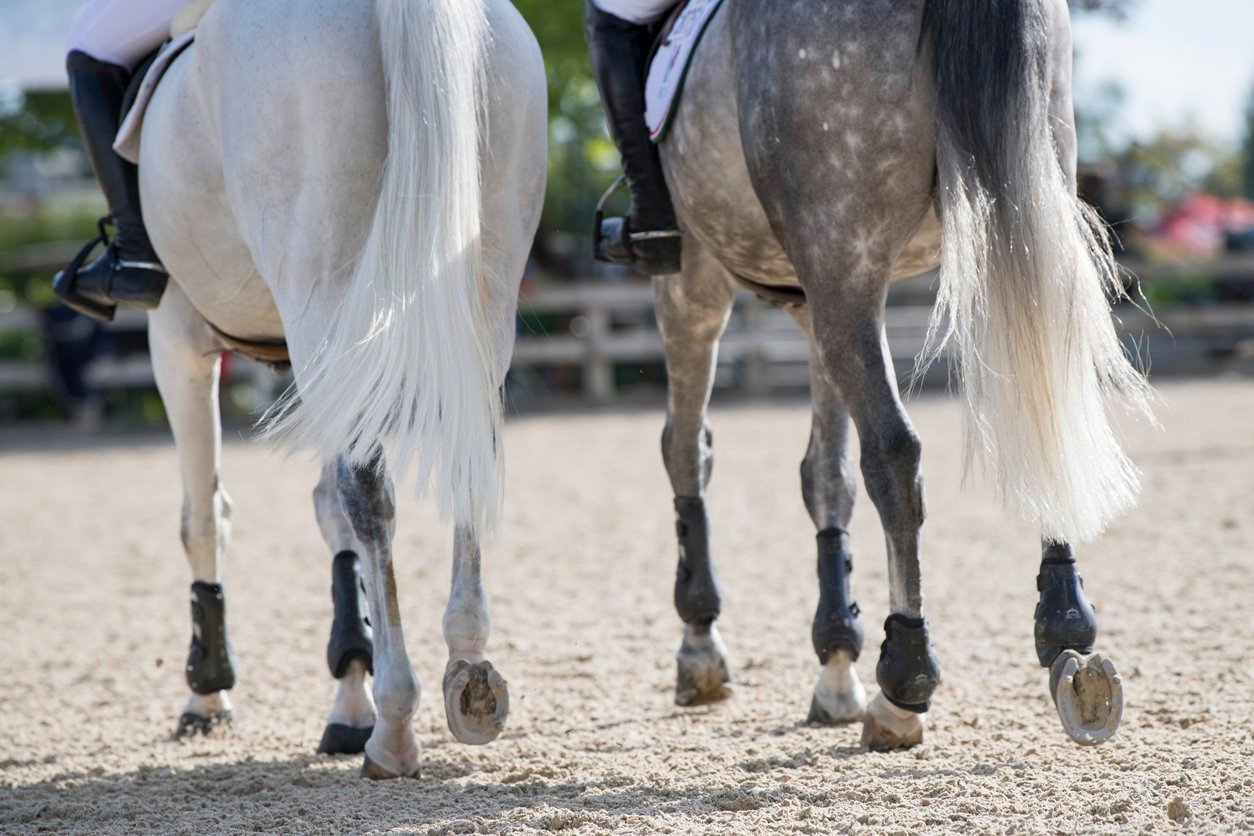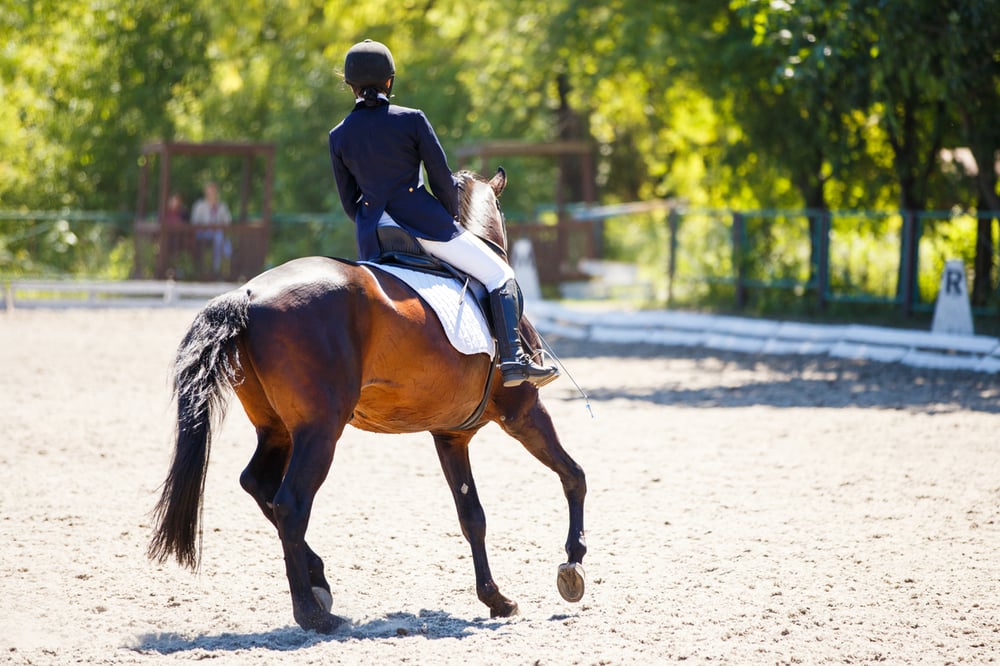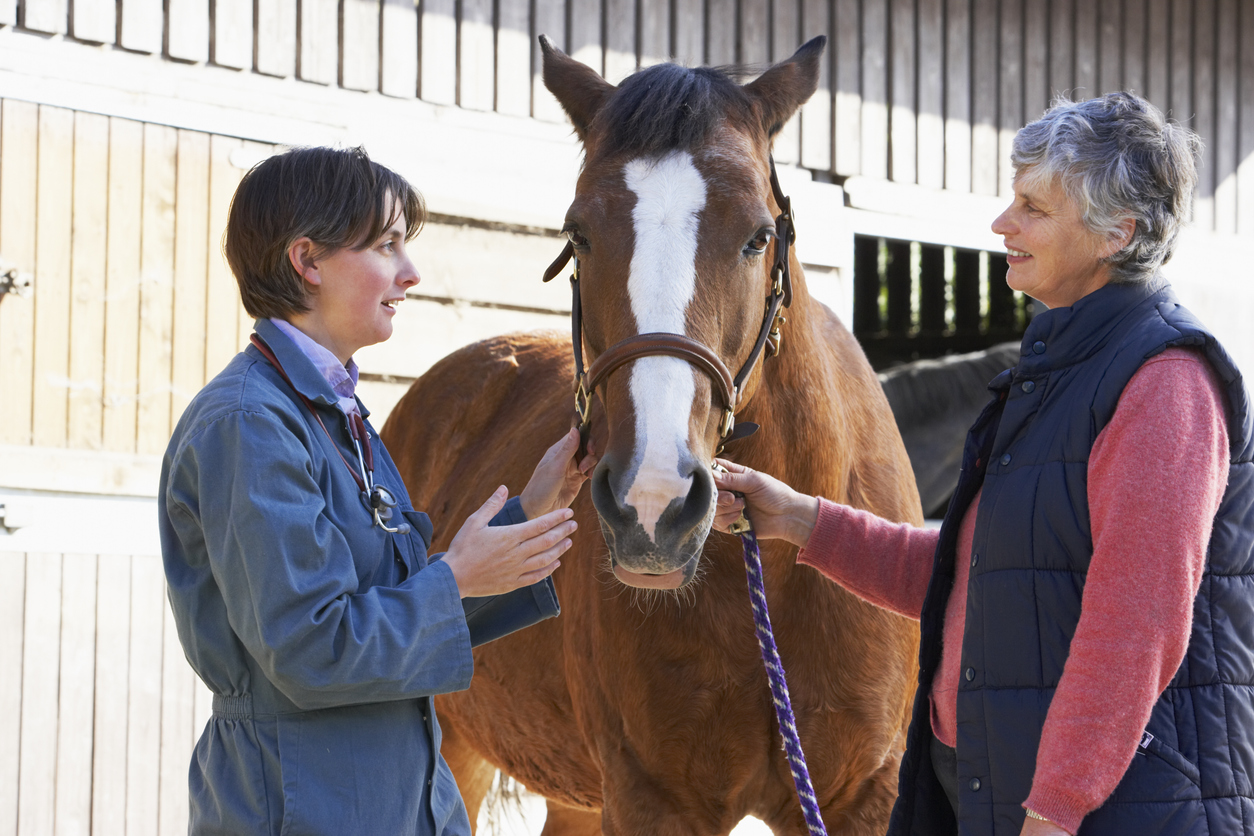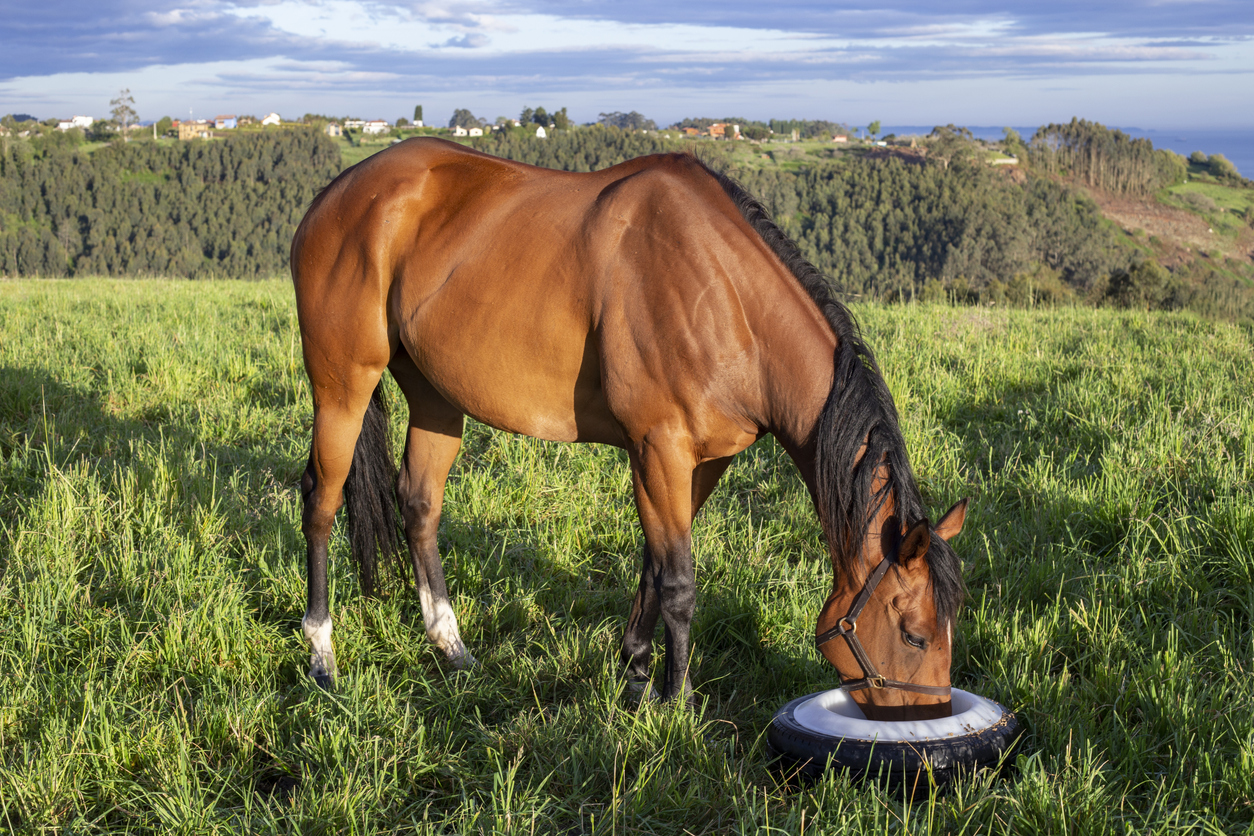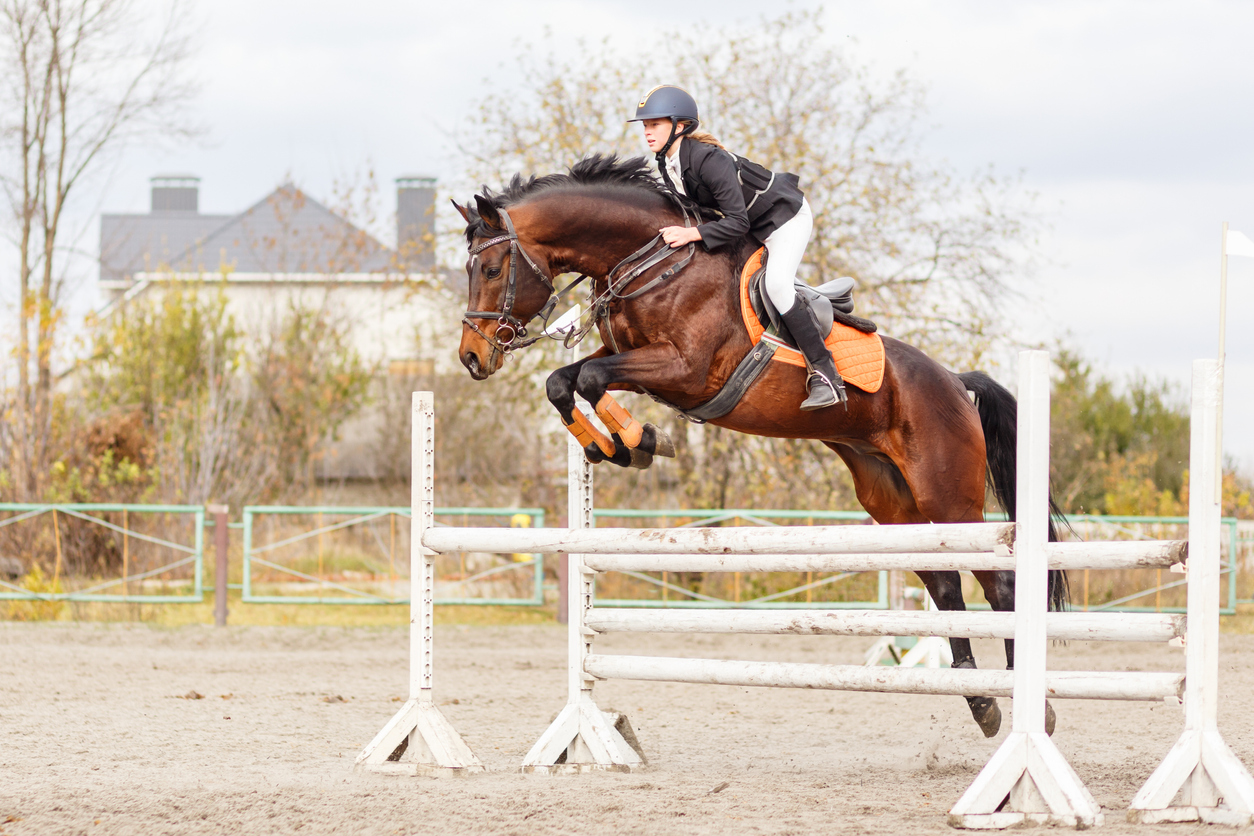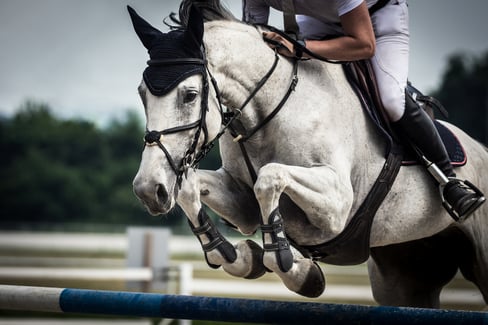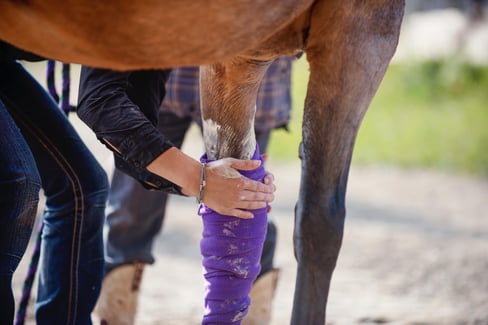Table of Contents
If you’re a horse breeder, rider, trainer, casual enjoyer, or anything in between, then you know how important it is to look after your horses’ legs. And unfortunately, when it comes to the legs, there’s a lot to look after, and a lot to look out for.
In fact, we have previous blog posts about different horse leg issues, such as Lame Horse – Causes, Symptoms & Cures of Equine Lameness and What is Bowed Tendon Horse and How It Can Affect Your Equine.
In this article, though, we’re focusing on horses hocks health problems. We’ll be going through
- Horses Hock Anatomy
- Horses Hock Health Concerns & Anomalies
- Hock Problems in Horses Symptoms
- Hock Injections for Horses
- Hock Supplements for Horses
- Q&A
So saddle up and let’s get into it, starting with what exactly we’re talking about when we say horses hock.
Horses Hock Anatomy
So, what is the hock of a horse? Well, gather around. Time for an anatomy lesson. Basically, the hock is the area on the back of a horse’s leg that looks like a reverse knee. It’s a series of joints and bones that can be prone to different health problems and anomalies, including injury.
Now that we’ve given you the TLDR, it’s time to hit you with that science.
A horse’s hock can actually be compared to the heel of a human foot/ankle. You can see this illustrated in the diagram below.
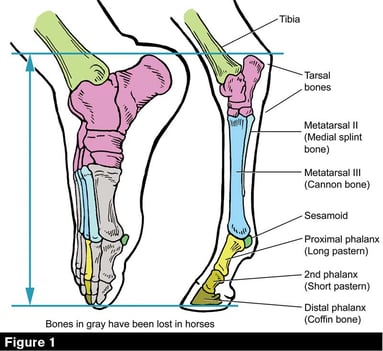
The important section for our purposes is the pink one labeled “Tarsal bones” that attaches to the Tibia. That’s what you’d consider the horse’s hock.
As you can see, the hock of a horse is a series of four joints and several bones that mirror those found in a human heel, which means the joint works similarly. So, although it’s in a more comparable location to a knee on a human, the inner workings of the hock itself are more like the end of your foot/ankle.
But, the way the hock functions is to aid in the movement of the back legs so they can bend and move so the horse can walk, trot, canter, and gallop.
Horses are not the only mammals that have hocks. They can be found in others, as well, like cows, cats, and dogs.
Horses Hock Joints
We mentioned previously that horses hocks are made up of four joints. Those joints are
- The tibiotarsal joint
- The proximal intertarsal joint
- The distal intertarsal joint
- The tarsometatarsal joint
The function of each joint for the hock has been outlined in the table below.
| Joint Type | Size | Description |
| Tibiotarsal joint | Largest | Controls the movement/bending of the leg |
| Proximal intertarsal joint | Second Largest | Absorbs shock, as cited by Dressage Today |
| Distal intertarsal joint | Second Smallest | Absorbs and dissipates shock |
| Tarsometatarsal joint | Smallest | Absorbs impact and shock |
As you can see above, the tibiotarsal joint is the largest joint that is essentially the star player when it comes to the actual purpose of the joint. However, because the hock takes so much pressure as a horse puts its weight on it to move, the shock absorption of the other joints is still an important supporting role.
But, because the hock as a whole takes so much pressure, it can have issues with health concerns and anomalies.
Horse Hock Health Concerns & Anomalies
As we mentioned briefly in the previous section, horse hocks are an area that can be prone to health issues and anomalies. We’ve included a list of six of those horse hock health concerns and anomalies below, including
- Hock arthritis in horses
- Fused hock joints in horses
- Capped hock in horses
- Bog spavin horses hocks
- String hock in horses
- Hock injuries in horses
Hock Arthritis in Horses’
Joints aren’t just the space between bones that allows them to move. That space between bones is filled with cartilage and fluid so that the bones of the joints aren’t rubbing against each other. Arthritis is what happens when that cartilage and fluid have worn away, so there is nothing preventing bone-on-bone contact. Hock arthritis in horses is when this happens in a horse’s hock joints. This type of condition can cause a lot of pain for your horse, especially when they use the joints affected.
Arthritis in the joints of the horses hock can be referred to as bone spavin. And although it can’t be cured, it can be managed.
If you’re interested in learning more about arthritis in horses, you can check out our blog post, Equine Mobility Tips for Winter Months.
Fused Hock Joints in Horses
Fused hock joints are typically what happens if your horse develops arthritis in the hock. Basically, the space between the joints that are for absorption rather than movement can become solid, which can actually feel better for the horse, causing less or no pain. According to the Horse and Rider, this can happen naturally or purposefully due to veterinary intervention.
Capped Hock in Horses
A capped hock is swelling to the hock that occurs due to an injury that affects the superficial bursa (protects tendons around bones), according to Jonathan Wood Veterinary Surgeon. A horse may not feel the issue and therefore experience no lameness or issues with moving. That being said, you can still have it evaluated by a vet so treatment (if any is required) can be administered.
Bog Spavin in Horses Hocks
This condition is due to excess fluid or swelling developing in the tibiotarsal joint, which is the large joint responsible for the movement of the horse’s leg. Bog spavin can develop due to a number of different factors, including from an injury or degeneration, according to the VCA Animal Hospitals, and it may but not necessarily result in lameness to the horse. Your vet can evaluate your horse to determine the best course of action for treatment.
String Hock in Horses
Actually referred to as stringhalt; this issue is characterized by hyperflexion in the hock joints when walking/moving, creating an abnormal stride characterized by jerky, upward movements. There are two types of stringhalt
- Australian
- Classic
The difference between the two is that one is acquired through eating certain plants and is typically temporary (Australian) and the other is caused by injury and will require treatment to overcome, according to the UC Davis Veterinary Medicine Center for Equine Health. You will need to call or meet with your vet so they can evaluate your horse and decide the best course of action.
Hock Injuries in Horses
Injury to a horse’s hock can happen in a variety of ways, especially for horses that are more physically active. Think about it. There’s an association between human runners and knee injuries because running is so hard on the knees. Although the joint functions differently, heavy movement will also be hard on the hock of a horse. Some of the horses hock conditions on this list can be the result of injury, like classic stringhalt, capped hocks in horses, or bog spavin.
Hock Problems in Horses Symptoms
Now that we’ve gone through some of the possible issues that horses hocks can have, we’ve created a table of symptoms and which health concerns they can be connected to.
| Symptom | Description | Possible Health Issues/Anomalies |
| Hock Pain in Horses | Depending on what the issue is that’s caused problems to the horse’s hock, the horse may experience pain in its hocks while standing still or while moving. You may notice your horse experiencing pain in its hock due to a change in its gait, the hock is sensitive to the touch, your horse is moving less or favoring one leg over the other, etc. | Arthritis, injury |
| Hock Swelling in Horses | Swelling can occur as the result of an injury or due to some other health concern or issue affecting the hock. This type of swelling may or may not be visible when just looking at swollen horses hocks, depending on the severity and location of the swelling. | Arthritis, capped hock, bog spavin, injury |
| Horses Hock Lameness | This is when a horse’s gait changes, ranging from a limp to not being able to move much at all. Lameness can occur in a horse’s legs when it’s suffering from pain in its legs | Arthritis, stringhalt, injury, potentially in capped hocks or bog spavin |
Although these are some of the symptoms your horse may display if it’s having issues with its hock, they can also showcase other issues in your horse’s legs, too. And the way it displays those issues may vary from horse to horse. So, if you notice something appears wrong with your horse and the way it’s moving, don’t hesitate to make an appointment with your vet to examine your horse, including the hock. That way, any issues, either hock-related or otherwise, can be found and treated in a timely manner.
Hock Injections for Horses
If your horse is experiencing lameness due to issues in its hocks, your vet may recommend hock injections to the affected joints within the hock. There are different options for what your horse might have injected into it, including
- Hyaluronic Acid
- Corticosteroids
- PSGAG (polysulfated glycosaminoglycan)
Hyaluronic acid is a component of the fluid that protects joints, corticosteroids is anti-inflammatory, and PSGAG repairs and protects cartilage.
Although these injections are used to help manage pain and discomfort in horses, the Purdue University School of Veterinary Medicine also describes a variety of risks associated with each type of injection, including infections, cartilage destruction, or lameness.
So, keep the safety of your horse in mind when choosing to engage in hock injections for horses, and choose to do so only at the advice of your veterinarian.
How much are hock injections for horses?
The cost of hock injections for horses depends on a variety of factors, like where you are or where your horse needs to be injected. However, it can be quite expensive, landing potentially in the hundreds of dollars.
A November 2019 expense report by Horse Rookie has horse injections listed as costing $450. Horse Rookie seems to be home-based in Montana USA, according to the About Horse Rookie page.
Now, keep in mind that horse injections aren’t typically a one-off expense, although also not necessarily a common one, either. You’ll have to ask your vet how often they recommend you give your horse hock injections.
What do hock injections do for horses?
The purpose of the hock injection depends on the injection your horse is getting, as described briefly above. However, basically, the point of the injections is to manage pain in your horses. The previously cited Purdue University article also states that these injections are typically used to treat joint lining inflammation, and cartilage damage in the joints, like with arthritis.
It’s important to note that these injections are about managing symptoms rather than curing issues. This means that if you choose to use hock injections for your horse, it may include getting them regularly or semi-regularly, depending on how often your horse needs them. If your horse is a show horse, race horse, etc., it may need a different schedule than a horse that engages in less intense exercise.
Joint supplements can be used as an alternative or in conjunction with injections.
In many instances, by incorporating a quality joint supplement into their daily regime, injections may not always be necessary. TRI-ACTA H.A. for Equine is a great non-invasive alternative to injections that works to manage pain but also addresses the root causes of the problems in the hock.
TRI-ACTA can also be used in conjunction with injections, which can help to extend the intervals between treatments and prolong the life of the hock injections.
TRI-ACTA H.A. for Equine
Our maximum strength formula is perfect for horses that are ageing, experiencing arthritis and stiffness, are in training and competition, or under a heavy workload.
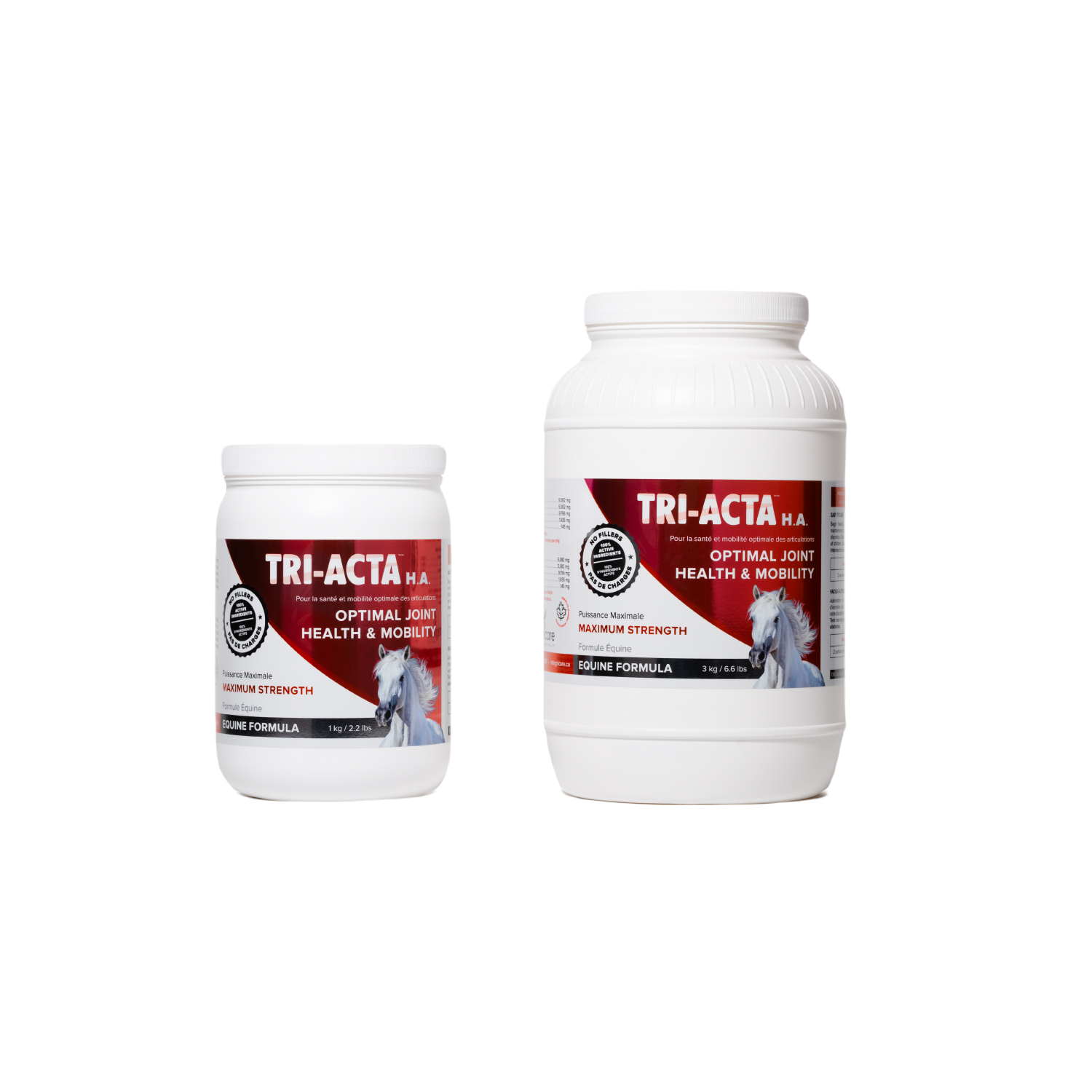
Hock Supplements for Horses
When it comes to horses hocks issues, you may want to consider prevention over needing treatment. And one way to prevent hock issues in your horse is to keep your horse’s joints strong using joint supplements. Although there are a number of joint supplements on the market to choose from, we’ve included the following four hock supplements for horses to consider below
- TRI-ACTA for Equine
- TRI-ACTA H.A. for Equine
- Smart Earth Camelina Oil Omega 3 Equine Supplement
- LubriSyn HA Equine
TRI-ACTA for Equine
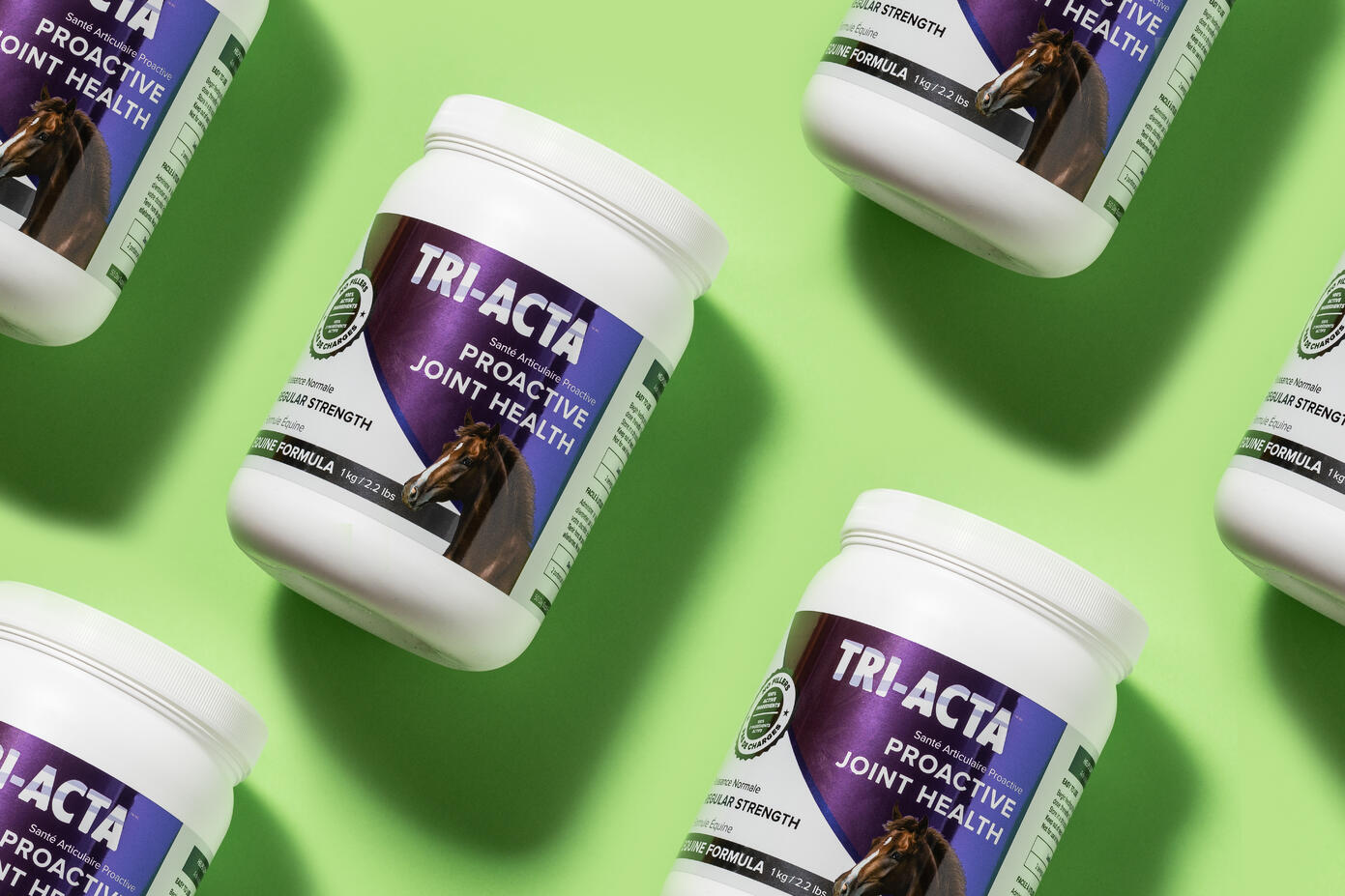
The first joint supplement on our list is our own. This product includes only three ingredients, with absolutely no filler. Those three ingredients are
- Glucosamine, which helps repair cartilage
- MSM, which helps reduce pain and inflammation (you can read more about MSM for horses in our blog post Horse Supplements MSM: Definition, Benefits, Usage, and Top 4 Brands)
- Chondroitin, which helps prevent the destruction of cartilage
Plus, all three of our ingredients are sourced from within Canada.
This supplement can be used as a preventative measure to protect against joint issues in horses, including horses hocks, or to help keep your horse mobile at the early onset of joint issues, including those that could affect the hock. Typically this product is for younger horses.
You can feed your horse this supplement by combining it with your horse’s feed.
TRI-ACTA H.A. for Equine
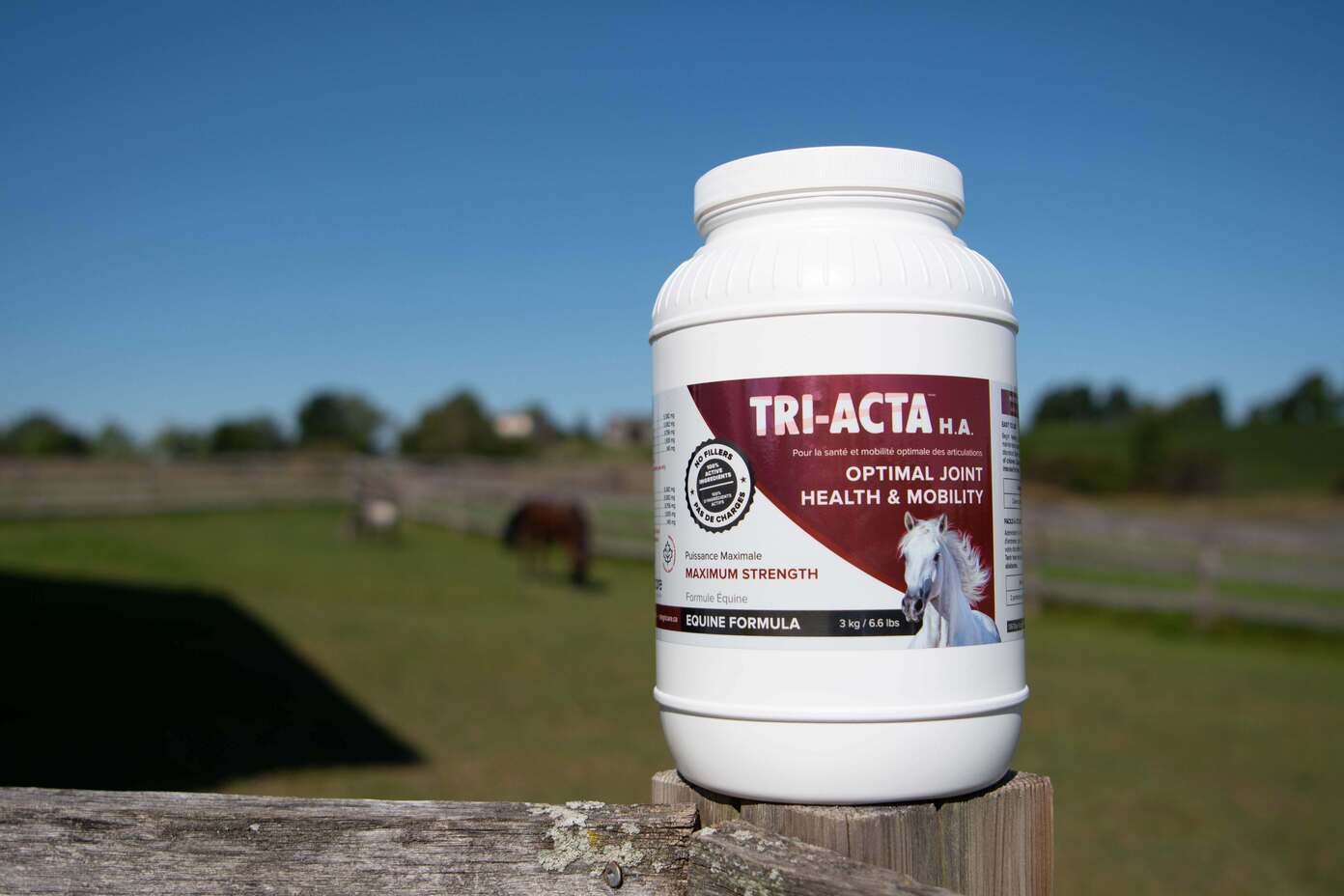
Surprise! The second product on our list is our own, as well. We wanted to include this one, too, because while the TRI-ACTA is better for younger horses, the TRI-ACTA H.A. is for older ones, those already experiencing mobility issues (like with arthritis), or those who are highly active (for instance, a horse that competes or races). So, although in terms of training, it can be used preventatively, it’s more of a symptom management supplement. It also includes no filler ingredients, but it has an extra ingredient. So, it has the same three ingredients with
- Glucosamine
- MSM
- Chondroitin
- But there’s also hyaluronic acid, which helps lubricate joints
Like the previous TRI-ACTA product, all the ingredients are sourced from within Canada.
It can also be served to your horse in the same manner by mixing it with your horse’s feed.
Smart Earth Camelina Oil Omega 3 Equine Supplement

Camelina Oil is not specifically a joint supplement. Instead, it’s a supplement that supplies horses with omega-3 (like fish oil for dogs, cats, and people). According to the website, this fatty acid can provide a plethora of benefits for your horse, including easing joint pain, but also things like improving hair and bone structure, preventing ulcers, etc.
It’s also used to improve bone structure and as an anti-inflammatory, which may support strength in the joints to a certain extent.
Either way, if your horse is in pain from arthritis, Camelina Oil is a great supplement to turn to.
LubriSyn HA Equine
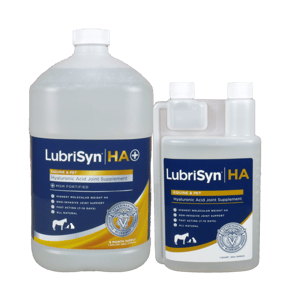
LubriSyn, like TRI-ACTA, can be used as a preventative measure or as a supplement to help ease your horse’s joint pain. The supplement is in liquid format to help with the hydration of the hyaluronic acid in it. It was developed by vet Dr. Steven Allday and has two options available, one that includes MSM and one that doesn’t.
The ingredients in this liquid supplement are divided into active and inactive ingredients.
The active ingredients are
- Methyl Sulfonyl Methane (MSM)
- Sodium Hyaluronate (hyaluronic acid)
The inactive ingredients are
- Water
- Glycerin
- Xanthan Gum
- Citric Acid
- Potassium Sorbate
Although that’s more ingredients than our TRI-ACTA has, it’s still very few ingredients with very few fillers, which makes this another great choice for a joint supplement that will help keep horses hocks mobile, strong, and pain-free.
Q&A
How to reduce swelling in horses hock?
The best way to reduce swelling, of course, depends on the reason for it. However, the tried and true method to reduce swelling is to use a cold compress, just like it is for humans, or to switch between cold and warm compresses for injuries that affect the muscle, as well. Daily supplements that contain MSM are also a great way to manage inflammation.
If your horse is experiencing swelling in its hocks, you may want to schedule an appointment with your vet to get your horse evaluated. That way, the cause/issue can be determined and the proper treatment administered, which will help reduce swelling, too.
What is sickle hock in horses?
A sickle hock in horses is when the joint is at an unusual angle that results in the hoof being further forward than is typical for horses, which can cause stress, discomfort, or strain on different structures in the leg, according to the Horse Report, making it more prone to injury or condition development, like those discussed previously in this article.
Do horses hocks fuse?
Horses hocks can fuse if arthritis develops in its joints, as we have described previously in this post. This fusion typically happens between the smaller joints that are more for absorption than movement, and it can actually relieve pain for your horse. Fusion can happen either manually by a vet or naturally over time.
So, although the word “fuse” when referring to joints, like those in horses hocks, can be scary, it’s not necessarily a negative thing for your horse. In fact, it could be a net positive for your horse so that it’s not in so much pain. And in that way, your horse can become more mobile by making its smaller hock joints less mobile. (As we said, they’re mostly used for shock absorption, anyway.)
In Summary
Horses hocks play a central role in keeping your horse agile and able to move, considering the pivotal role it plays and allowing horses hind legs to bend. We hope we’ve helped you understand what the hock is, what health issues it’s at risk for, symptoms of those issues, and supplements and injections you can use to keep your horses’ strong and functioning.
To sum up, quickly, if your horses are suffering from the following symptoms, it may be time to get your horses’ hocks checked out by a vet, as they may be suffering from a bigger issue
- Pain
- Swelling
- Lameness
Those bigger issues can include
- Hock arthritis in horses
- Fused hock joints in horses
- Capped hock in horses
- Bog spavin horses hocks
- String hock in horses
- Hock injuries in horses
But, there are supplements you can use for your equine friends, either as preventative measures or for pain and symptom management. The supplements we recommend to keep your horses’ hocks strong, so hopefully, they stay injury-free or pain-free are:
- TRI-ACTA for Equine
- TRI-ACTA H.A. for Equine
- Smart Earth Camelina Oil Omega 3 Equine Supplement
- LubriSyn HA Equine
If you’re interested in purchasing either of our joint supplements for horses, you can shop our products.
TRI-ACTA for Equine
Providing preventative support for younger horses and helping mitigate the early onset of joint degeneration and other mobility issues.
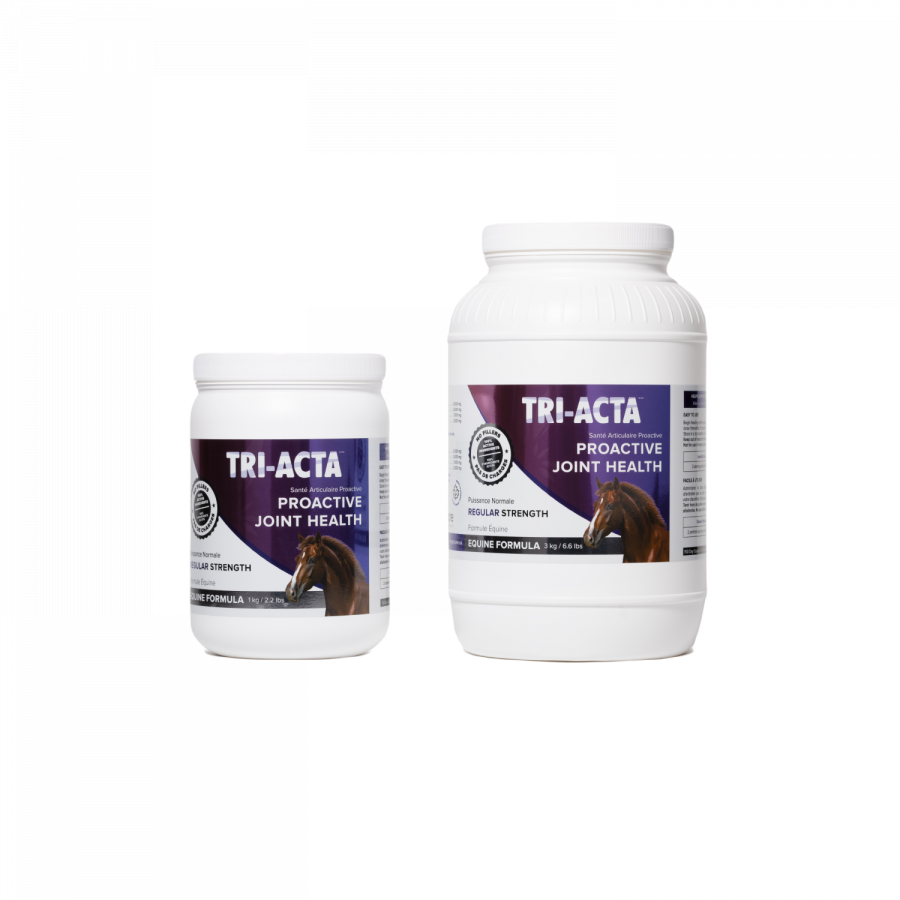
If you want to know more about keeping your horses healthy, check out more of our blogs on horse health or our resources page.
And if you’ve still got questions, don’t hesitate to contact us.
Newsletter Signup
Subscribe to our newsletter to receive the latest news and exclusive offers.
.jpg?height=2000&name=Cliick_Integricare-DISPLAY-REVISEDV2%20(1).jpg)
Proactive & Therapeutic Joint Supplements
When given daily, Integricare joint supplements recover bone and joint injuries faster and help prevent mobility injuries from happening in the first place.

